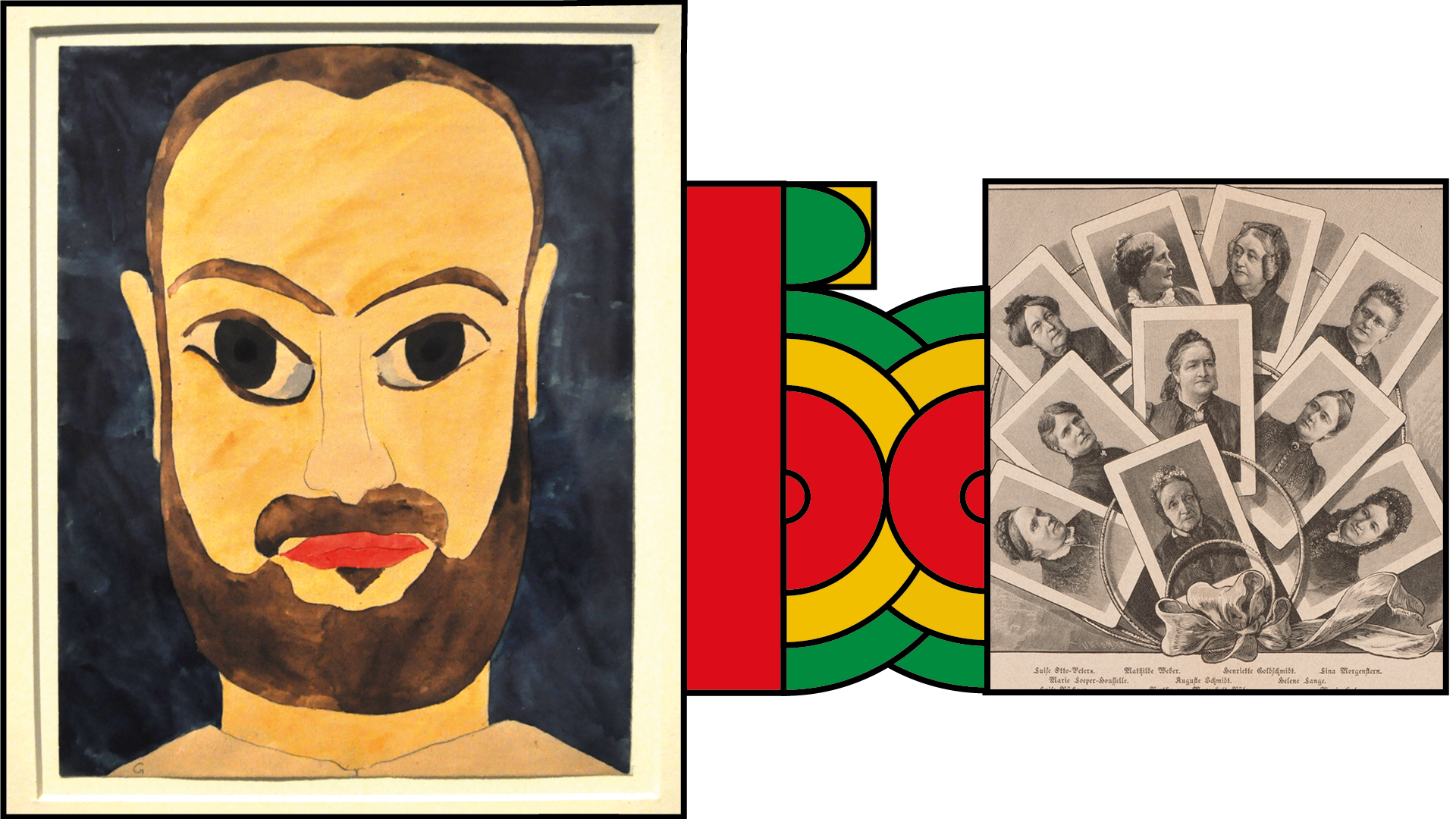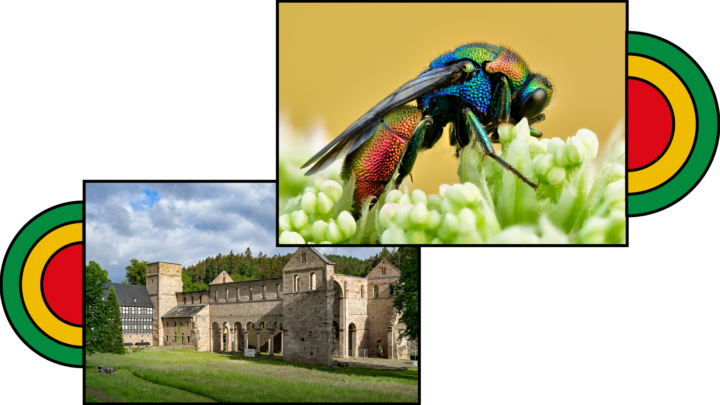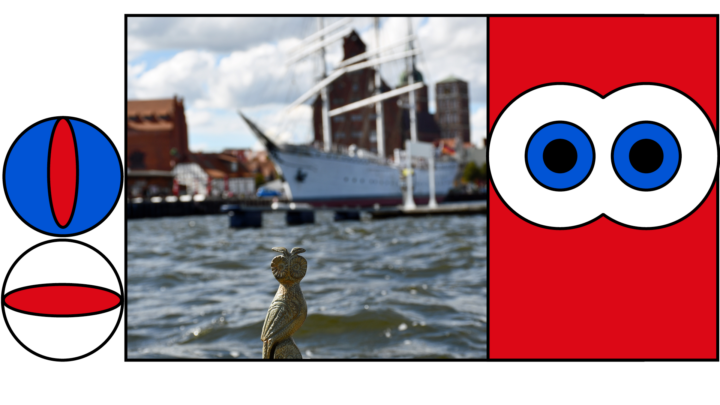The willingness of institutions from the GLAM (Galleries, Libraries, Archives & Museums) sector to open up to Wikimedia projects continued to grow in 2022. Highlights included our cooperation with the Leipzig City Archive and a visit by Wikipedians to the Prinzhorn Collection.
A QRPedia code is attached to the statue of the Bremen Town Musicians. Via smartphone, it provides access to the corresponding Wikipedia article about the famous landmark – in 48 language versions. It’s not just a practical tool, but in view of the many refugees coming to Germany in the wake of war and crises, “it’s also a way of welcoming people by bringing them closer to information in their native language,” says Holger Plickert, Project Manager Culture and Community at Wikimedia Deutschland.
Together with Gereon Kalkuhl – Wikipedian and cultural ambassador of the free online encyclopedia – Plickert presented these and other achievements from the Wikiverse in the spring of 2022 in an online presentation at the invitation of the Berlin Working Group Information (Berliner Arbeitskreis Information BAK).
Not least, this presentation was also about the added value cultural institutions gain when they open up to Wikimedia projects. “Fortunately, more and more cultural and memory institutions from the GLAM sector are recognizing this,” said Plickert.
Open archives
The Leipzig City Archive is one of these institutions. On the occasion of the third nationwide Digitaltag on June 24, 2022, the memory institution opened its virtual doors for Wikipedia volunteers (as well as for all citizens) in cooperation with Wikimedia Deutschland.
Projects such as WikiSource that makes documents machine-readable – even if some of them are centuries old – were presented, as well as the “Klexikon”, known as “Wikipedia for children”, which has existed since 2014.
With the event, the City Archive has “opened itself further in the direction of a digital community of people who want to volunteer or who are already doing so on Wikipedia,” says Michael Ruprecht, Director of the City Archive. The cooperation is also “an important signal to the public, stating that our archive material can be used by anyone interested, and usually free of charge.” That’s a welcome synergy: the City Archive was also the venue for the awards ceremony for the “Wiki Loves Monuments” (WLM) and “Wiki Loves Earth” (WLE) photo competitions in the fall of 2022.
International Museum Day
Not only the presence of archives, but also of museums increased significantly in Wikimedia projects. One occasion was the International Museum Day, which has been directed by the International Council of Museums (ICOM) since 1977 – and where Wikimedia associations and user groups from 27 countries, many of them from the global South, participated in 2022.
“The diversity we strive for as a Wikimedia movement was reflected as never before in our participation in the International Museum Day,” states Raimund Liebert, Director of Programs at Wikimedia Austria. Once again, the centerpiece of Wikimedia’s involvement was a Wikidata contest with considerable response and measurable success. Nearly 1,000 people participated, and 86,108,434 bytes were added to Wikidata items about museums. “An example of how collaboration works across borders,” Liebert sums up.
Visit to the Prinzhorn Collection
One particular institution facilitating a hybrid “GLAM on Tour” event for the first time in 2022 is the Prinzhorn Collection at the Heidelberg University Hospital. It houses the world’s largest collection of so-called Outsider Art or Art Brut – art by people with exceptional psychological experiences. It is a subject whose depiction in Wikipedia requires sensitivity – and was treated accordingly by the participating Wikipedians.
The user Alraunenstern was impressed by the responsiveness of those responsible on site. “We were given an extensive handout of books to scan and use ahead of time,” she says. During the event, volunteers could request additional works, which were then rescanned – such as the Prinzhorn publication “Irre ist weiblich” (“Mad is female”) about artistic interventions by women in psychiatric clinics around 1900, which the Wikipedian had requested.
Growing reputation of projects
“Visual art is generally taking up more and more space in our projects and is increasingly met with interest among the volunteers,” Holger Plickert describes his observation. This is also reflected in the collaboration within the kuwiki (art studies + Wikipedia) working group, where art historians and Wikipedians pool their expertise.
The kuwiki project “Living Handbook”, a manual for writing scientific texts on art in Wikipedia, was awarded the Deubner Prize of the German Association for Art History in 2022.
At many GLAM events, in 2022 the Project Manager Culture and Community witnessed a growing willingness to participate on the part of institutional leaders. Whether in a cooperation with the Archive of the German Women’s Movement in Kassel or in Austria with the Esterházy Private Foundation, “you can see the reputation that the Wikimedia movement has built up in recent years,” says Plickert.
In the course of a GLAM stop with the Alte Pinakothek in Munich, it once again became clear to him how valuable it is to offer events digitally and thus enable more participation, even beyond the pandemic. And it’s happening all over the world. “For the first time,” Plickert recounts, “a volunteer also joined in from San Francisco at breakfast time.”
“Opening the archive boxes and stores of knowledge on the women’s movement not only offered an immediate benefit through the inquiries to us as an institution. It was also a great experience that the volunteers transferred their knowledge into articles and shared and passed on their already existing knowledge.”
Kerstin Wolff, Head of Research at the Archive of the German Women’s Movement in Kassel
“Wikidata is a site that is becoming more and more exciting, especially as museums go online and want to network, whether with each other or with other cultural institutions.”
Frank von Hagel, Research Associate at the Institute for Museum Research in Berlin



